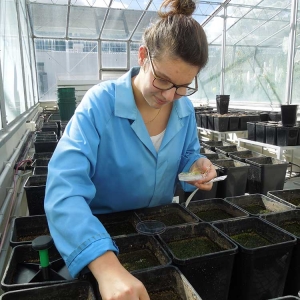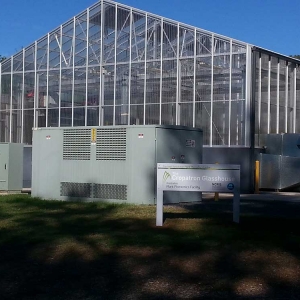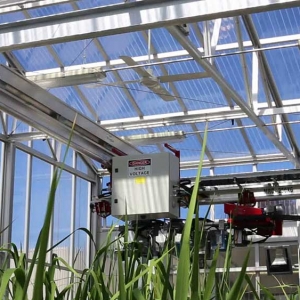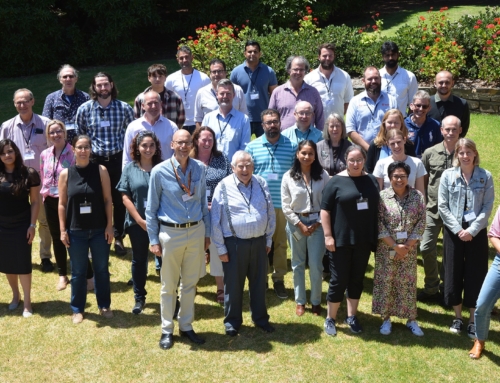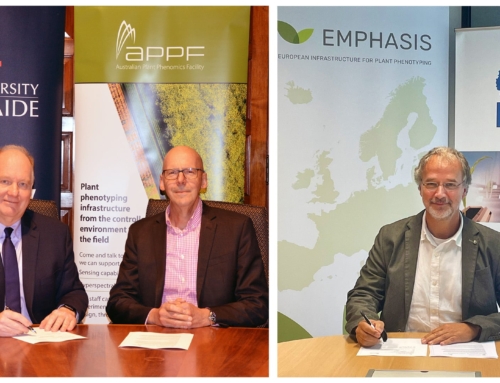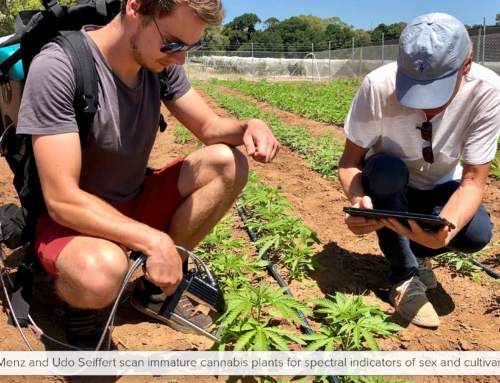As the sun rises over another crisp autumn morning in Canberra, you will find French intern, Camille Mounier, keenly watching over her rice lines in the Cropatron at the Australian Plant Phenomics Facility’s node at CSIRO Agriculture and Food.
Her project, ‘A complex system biology approach to understand the factors affecting canopy photosynthesis’, is being led by Dr Xavier Sirault, Director of the node, in partnership with the Chinese Academy of Sciences.
The project team aim to develop system models of canopy photosynthesis for both rice and wheat, in particular, developing novel methods to combine these system models with phenomics data. This approach will help in the identification of the critical factors controlling photosynthetic energy conversion efficiency in C3 species with the view to improving canopy photosynthetic efficiency, and subsequently, crop yields in small grain cereals.
Using the Cropatron platform, Camille will acquire data on canopy growth, gas and energy exchange in order to validate the biophysical photosynthetic model developed by Prof Xinguang Zhu, Head of Plant Systems Biology Group at the CAS-MPG Partner Institute for Computational Biology.
The Cropatron is a PC2 compliant, fully environmentally controlled (temperature, CO2 and humidity) greenhouse equipped with an automated gantry system (operating at 3.5m above the floor) for proxy-sensing imaging of plants grown in mini canopies. The sensing head is composed of an hyperspectral camera (400-1000nm) for measuring chlorophyll pigments, Far IR imaging for proxy sensing of canopy conductance, LiDAR for quantifying canopy architecture and monitoring growth over time, lysimeters for measuring water use at plot level and a gas exchange chamber at canopy level for measuring canopy assimilation.
Academic and commercial plant scientists are welcome to access the Cropatron platform – find out about pricing, availability and bookings here.



